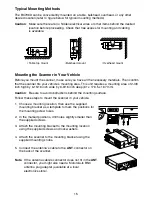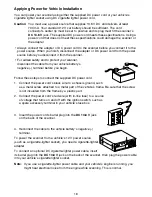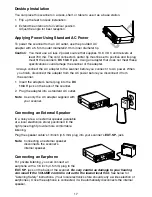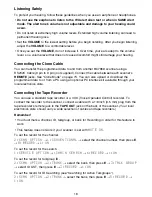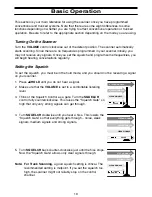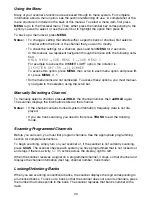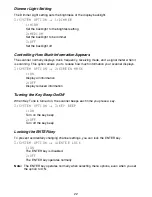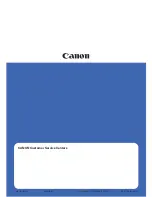
Trunked Scanning
While conventional scanning worked great while there were only a few groups wanting to
use the frequencies, with the advent of smaller, lower-cost radios more and more agencies
and businesses wanted to take advantage of the utility of 2-way radio. As a result, the bands
that were used most became full, so new users were not able to take advantage of the
technology as quickly as they wanted.
Trunking solved this frequency shortage by allowing multiple groups to use the same set of
frequencies in a very efficient way. While each type of trunking system operates a little
differently (see the next few sections), they all work on the same basic premise: even in a
system with a lot of users, only a few users are ever transmitting at any one time.
Instead of being assigned a frequency, as with conventional systems, each group is
assigned a Talkgroup ID. A central computer controls the frequency each group operates
on...and this frequency selection is made each time a user transmits. So, while on a
conventional system queries, replies, and follow-ups are all on a single frequency, they
could each be on completely different frequencies on a trunked system. This semi-random
frequency assignment made monitoring such a system impossible prior to Uniden’s invention
of the Trunktracking scanner.
Motorola Trunking
While there are 4 different types of Motorola trunking systems, they all use the same basic
trunking method. The system consists of one control channel plus one or more voice
channels (typically 10, 20, or 30 total channels). When a user presses Push To Talk (
PTT
)
to transmit, their radio first sends their talkgroup information to the control channel. The
computer then assigns that talkgroup to a specific voice channel and transmits that data
over the control channel. All radios in that talkgroup switch over to the assigned voice
channel and the user can begin speaking. This all typically takes place in about a
second...the person transmitting hears a beep from their radio when the channel is assigned
and it is OK to start talking.
The four systems in use are:
•
Motorola Type I
– the radios send the radio ID, the fleet and subfleet talkgroup ID to the
control channel each time they transmit. To program a Type I system, you need to know
the system’s fleet map. The most common fleet maps are included at the back of this
manual. You can also find fleet map resources on the web.
•
Motorola Type II
– the radios only send the radio ID and radio channel code to the control
channel. The central computer keeps a database of radio ID’s and which talkgroup is
assigned to which channel code for each radio, so with this system the user’s radio sends
only about 1/3 the data as a Type I system with each transmission. Type II systems do not
use Fleet-subfleet talkgroups; instead they use a 5-digit ID for each talkgroup.
•
Type IIi Hybrid
— these systems support a mix of both Type I and Type II users. Like
Type I systems, you must know the system’s fleetmap to ensure proper tracking.
•
Motorola Astro Digital
— for channel control purposes, this type of system operates just
like a Type II system — although the control channel can be a 3600 bps data rate (for
mixed analog/digital systems) or a 9600 bps (for digital-only systems). Pure digital sys-
tems can be implemented under APCO 25 Phase 1 or Phase 2 standards. Your BC796D
is able to decode all unencrypted digitized voice traffic on either mixed mode or digital-only
APCO 25 Phase 1 systems.
7
Summary of Contents for APCO 25
Page 1: ......
Page 2: ......
Page 6: ......
Page 81: ...75 Memo ...
Page 82: ...Memo 76 ...
Page 83: ...Memo 77 ...
Page 84: ......





















